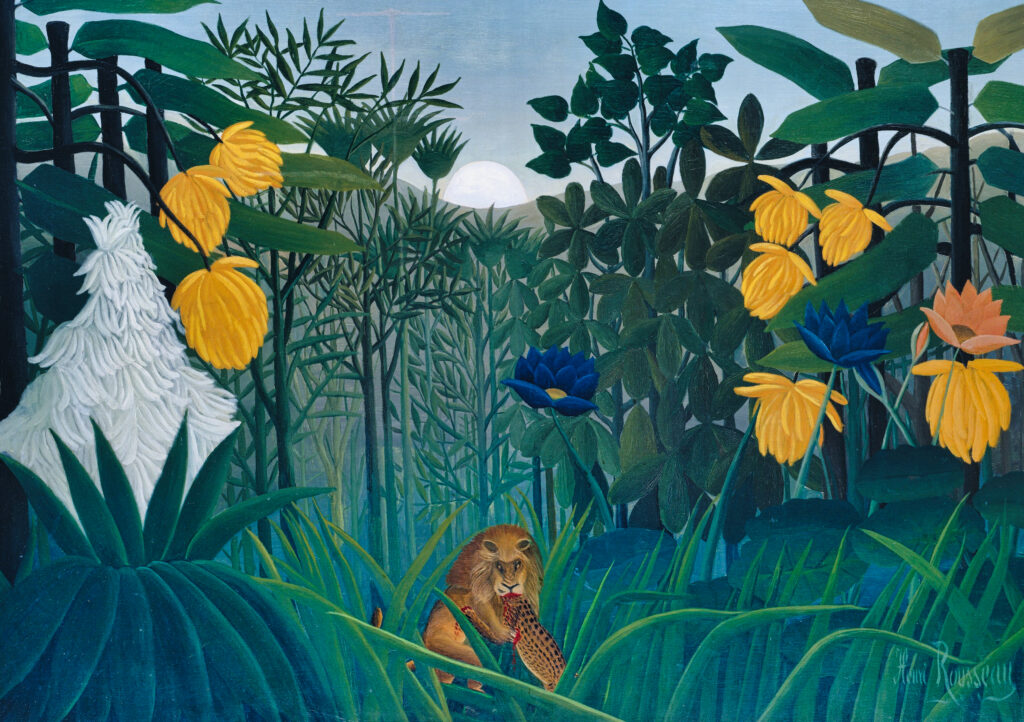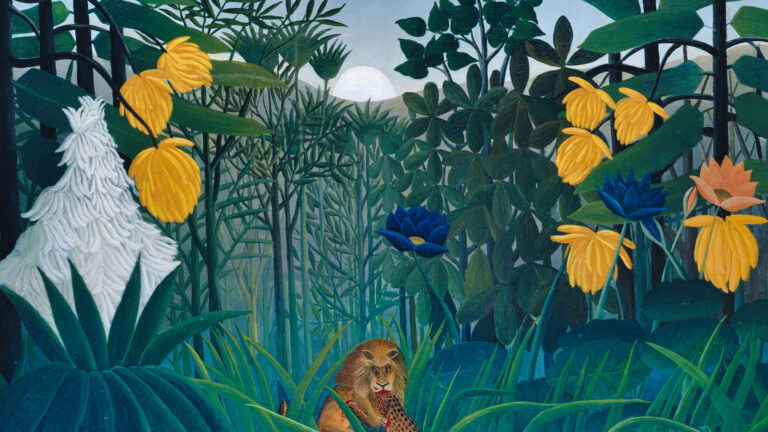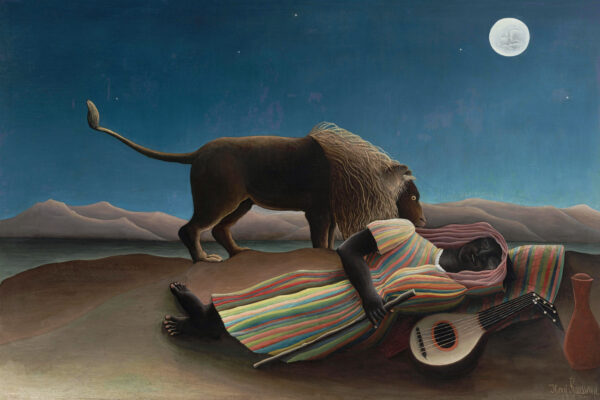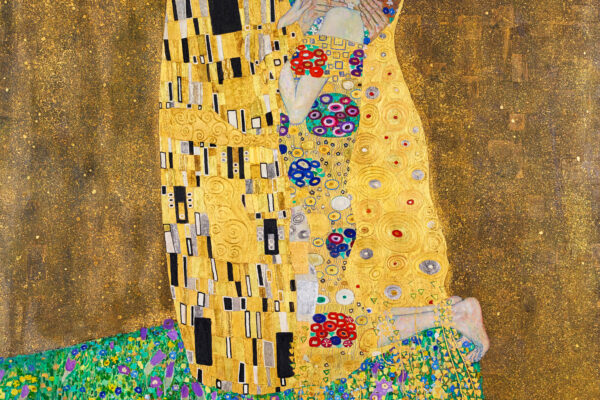
Henri Rousseau’s “Le Repas du Lion” (The Lion’s Meal) is a masterpiece of jungle fantasy, a mesmerizing work of art that captures the imagination with its vivid depictions of wildlife and lush vegetation. Painted in 1907, the work is a prime example of the artist’s signature style, which combined meticulous detail with dreamlike compositions.
In this blog post, we’ll explore the origins of “Le Repas du Lion,” analyze its key elements and themes, and discuss why it remains such an important and captivating work of art today.
Henri Rousseau was a self-taught artist who began painting in his spare time while working as a customs officer. He drew inspiration for his work from his love of nature and his vivid imagination, often depicting jungle scenes and exotic animals in his paintings.
“Le Repas du Lion” was one of Rousseau’s most celebrated works, and it was exhibited at the Salon des Indépendants in Paris in 1908. The painting immediately attracted attention for its striking use of color and composition, and it helped cement Rousseau’s reputation as one of the most original and visionary artists of his time.
The painting depicts a lush jungle scene, with a lion crouched over its prey in the foreground. The vegetation is dense and wild, with towering trees and dense undergrowth.
One of the most striking aspects of the painting is its use of color. Rousseau employed bold, bright hues to create a sense of vitality and energy, contrasting the vibrant greens of the jungle with the deep blues of the sky.
The composition of the painting is also notable. Rousseau used a flattened, two-dimensional style that emphasizes the decorative aspects of the painting while also creating a sense of depth and perspective. This gives the painting a dreamlike quality, as if it exists in a world beyond the confines of reality.
“Le Repas du Lion” is rich with symbolism and themes, many of which relate to Rousseau’s fascination with nature and his belief in the power of the imagination. The painting can be seen as a celebration of the wild and untamed aspects of the natural world, as well as a reflection of the artist’s own inner landscape.
At the same time, the painting also contains darker elements, such as the predatory nature of the lion and the potential for violence and danger in the jungle. This tension between the beautiful and the dangerous is a recurring theme in Rousseau’s work, and it adds a layer of complexity to “Le Repas du Lion” that makes it all the more compelling.
Henri Rousseau’s “Le Repas du Lion” is a masterpiece of jungle fantasy, a painting that captures the imagination and transports viewers to a world of vibrant color and untamed nature. Its unique blend of detail and dreamlike composition, as well as its rich symbolism and themes, have made it one of the most iconic works of art of the 20th century.


